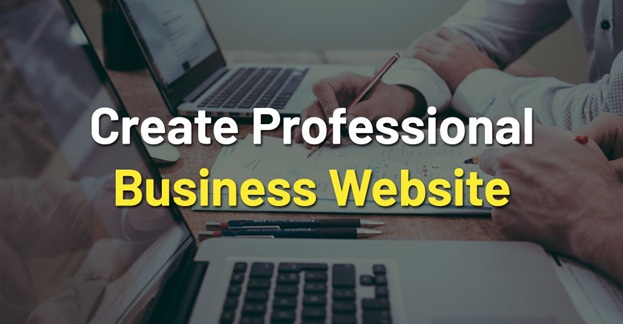Building a professional website from scratch may seem daunting, especially if you are new to the digital world. However, with the right guidance and tools, anyone can create a visually appealing and functional website.
This comprehensive guide will walk you through the entire process, from the initial planning stages to the final launch, ensuring you have a solid foundation to start from. We will also explore various aspects that influence the “website cost” and how you can make informed decisions throughout your website building journey.
Step 1: Define Your Purpose and Goals
Before diving into the technical aspects of building a website, it’s crucial to define the purpose of your site. Are you looking to sell products, provide information, or showcase your portfolio? Your website’s purpose will influence every decision you make, from design to functionality. Set clear, measurable goals for what you want to achieve with your website, such as increasing product sales by 20% or reaching a specific audience size within a year.
Step 2: Choose the Right Domain Name
Your domain name is your identity on the web; it’s how users will find you and remember your site. Choose a name that is not only reflective of your brand but is also easy to spell and remember. Keep it short, avoid numbers and hyphens, and aim for a .com extension if possible, as it is the most recognized. The cost of a domain varies depending on the registrar you choose and the popularity of the name, so consider this as part of your initial “website cost.”
Step 3: Select a Hosting Provider
A hosting provider is where your website lives on the internet. It’s important to choose a reliable host that offers good speed, uptime, and customer support. There are various types of hosting such as shared, dedicated, and cloud hosting, each with different price points and features. Shared hosting might be a cost-effective option if you are just starting out, but as your traffic grows, you might need to upgrade to a more robust solution.
Step 4: Plan Your Site Architecture
Organizing the structure of your site is crucial for both user experience and SEO. Plan your pages and content hierarchy based on the goals you set earlier. Create a sitemap that outlines every page you plan to include. This step is vital as it influences the ease of navigation on your site, impacting the overall user experience and your site’s effectiveness.
Step 5: Design Your Website
The design of your website should align with your brand and appeal to your target audience. It’s advisable to use a responsive design that works on both desktops and mobile devices. You can use templates provided by website builders if you are not experienced in web design. However, for a more customized design, you might consider hiring a professional designer, which will add to your overall “website cost.”
Step 6: Develop Your Website
With a design in place, you can start building your website. If you are using a website builder like WordPress or Wix, you can select themes and plugins to add functionality to your site. For those who want more customized features, hiring a web developer might be necessary. Ensure that your website is optimized for SEO by using proper tags, mobile optimization, and fast loading speeds.
Step 7: Create Quality Content
Content is king in the digital world. Develop high-quality content that provides value to your audience. Include keywords organically to improve your SEO, and ensure your content is engaging and addresses your visitors’ needs. Remember, content is not just text; it includes images, videos, infographics, and more.
Step 8: Test Your Website
Before launching, test your website thoroughly to catch any issues. Check compatibility with different browsers and devices, ensure all links and forms work correctly, and review the site’s loading speed. Making sure everything is in working order before going live can save you from potential headaches later on.
Step 9: Launch Your Website
Once everything is tested and ready, you can launch your website. Announce your launch through your social media channels, email newsletters, and other marketing platforms. Drive traffic to your site with SEO, pay-per-click ads, and social media marketing.
Step 10: Maintain and Update Regularly
After your website is live, it’s important to keep it updated and maintained. Regularly update your content, check for security vulnerabilities, and optimize your site’s performance to ensure it continues to meet your goals and serve your audience effectively.
Conclusion
Building a professional website with comparedbusiness from scratch is a significant undertaking that involves many different elements. By following these steps, you can ensure that your site is well-designed, functional, and optimized for your goals. Remember, the “website cost” will vary depending on your choices throughout the process, but investing wisely in your website is investing in the success of your online presence. Keep learning and adapting as you grow, and your website will serve as a powerful tool in your business arsenal.
